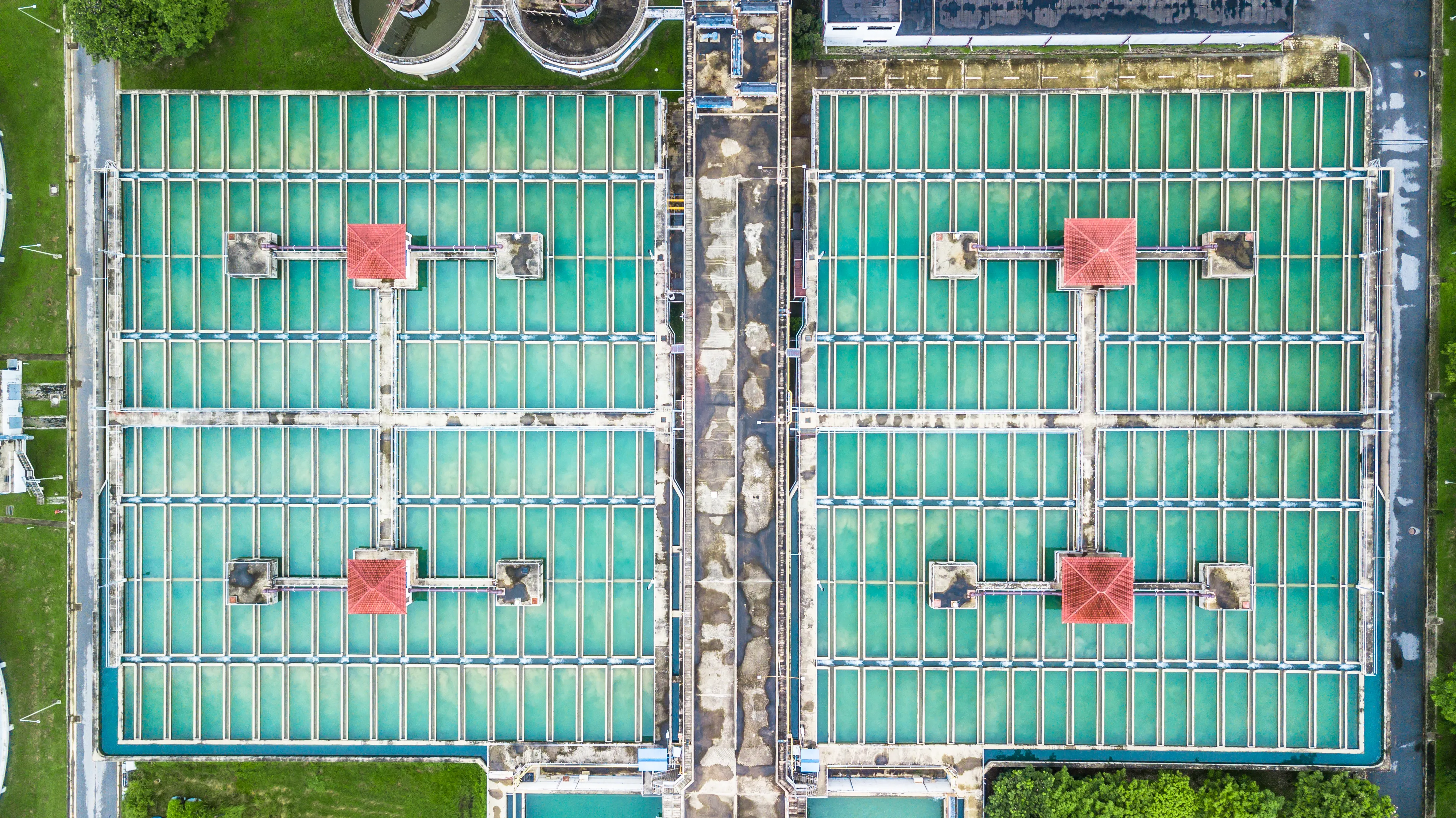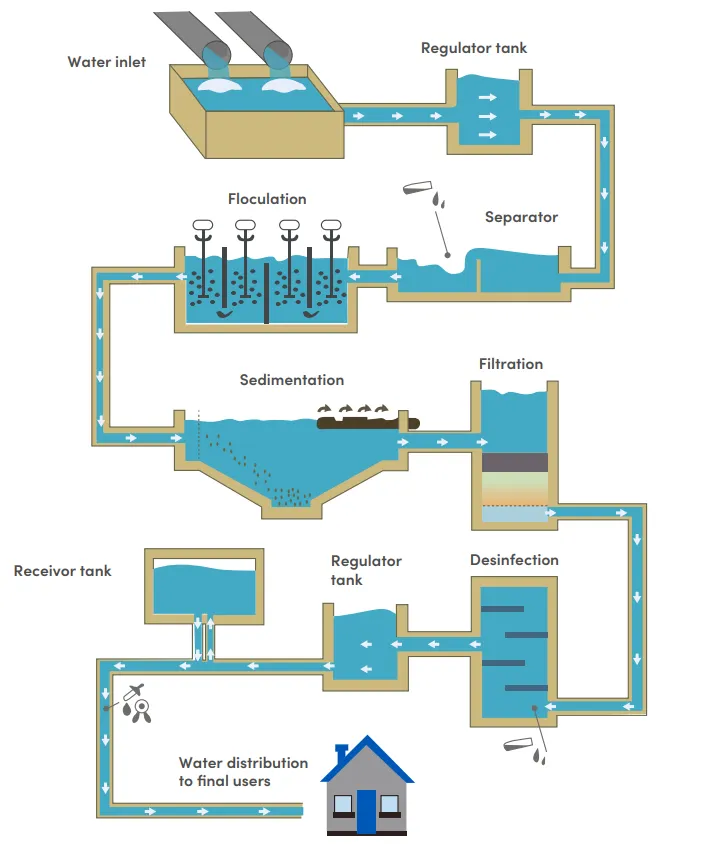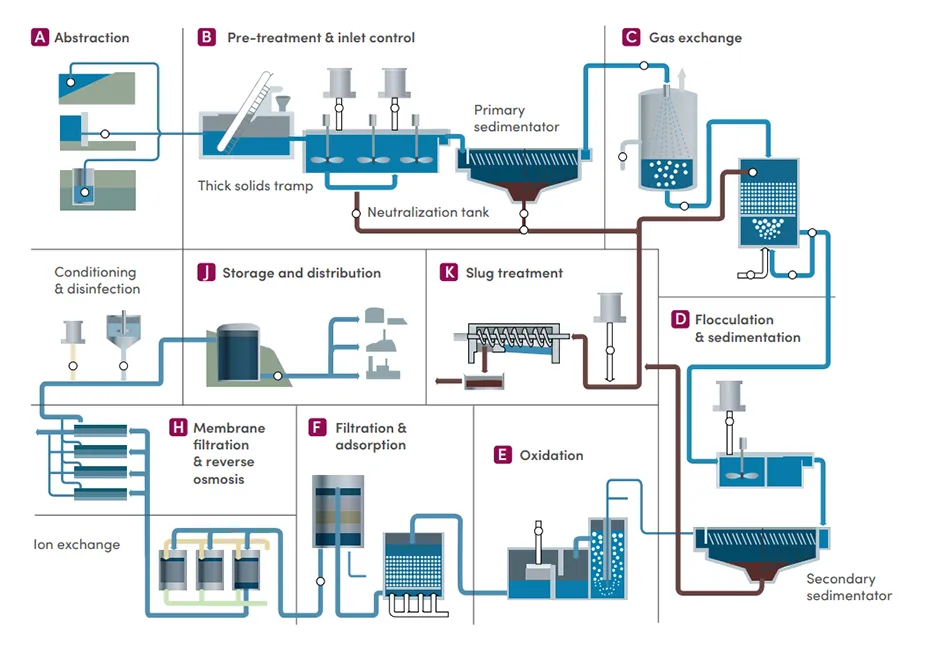Water purification
The water purification process varies depending on the natural conditions of the source, there are aquifers in which the water is already drinkable and only needs to be distributed, the surface waters from lakes and rivers require basic treatment, finally, conditioning water for reuse requires a special treatment.

Surface water purification
If the source of the water is surfaced (river or lake water), the purification treatment usually consists of a process of separation of certain components of natural water, followed by the precipitation of impurities, filtration and disinfection with chlorine or ozone.

Reuse water purification
If the water source has the presence of salts and/or heavy metals, the elimination processes of this type of impurities are more complicated and costly. In areas with scarce water resources and coasts, drinking water can be obtained by desalination, which is usually carried out by reverse osmosis or distillation.
Reuse drinking water treatment

Phases of the water purification treatment
Pretreatment
The first step is to remove large solids. A fence is usually placed to prevent fish or branches from filtering. Then, with the help of a sand trap, the sand is separated from the water to prevent it from damaging the water treatment plant pumps. At this stage, a pre-disinfection is also common to destroy some organic substances.
Flocculation-Coagulation
The low pressure pumps transport the water to a mixing chamber, where the components that make the water drinkable are incorporated. In this phase of the purification process, the pH is adjusted by adding acids or alkalis and coagulating agents are added to the water.
Decantation
In the decanter, the suspended particles carried by the water are separated by gravity. The denser harmful sediments remain at the bottom, where they are eliminated and the less dense ones remain dissolved in the decanted water.
Filtration
After the decantation process, water is passed through a porous device to remove less dense sediments. These filters finish straining impurities. There are different types of filters, such as sand or activated carbon, and these can be open and use gravity or closed and operate under pressure.
Water disinfection
Finally, chlorine is added to eliminate any type of bacteria or virus. If you want to eliminate pathogens from groundwater or natural springs, it can also be achieved through the irradiation of ultraviolet rays or the application of ozone, for example.
Analysis
Once the process in the plant is finished, it is essential to carry out various analyzes of the water to ensure that the purification process has been successful. Drinking water must be colorless, odorless and tasteless and comply with the regulations in force in each country.